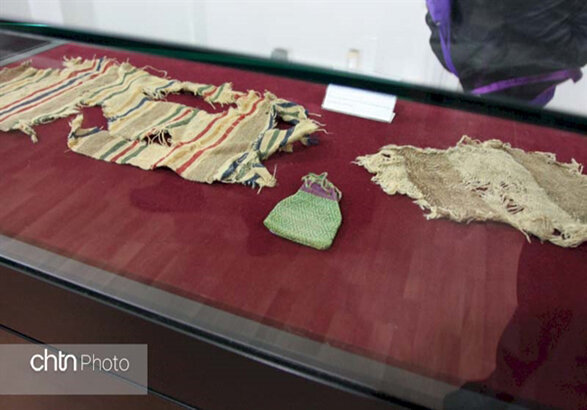Exhibit showcases relics discovered from Austrian salt mine

TEHRAN – A collection of historical relics, discovered from an Austrian salt mine is currently on show in the northwestern Zanjan province, the provincial tourism chief has announced.
A total of 18 historical objects and tools found in Austria’s Hallein Salt Mine, also known as Salzbergwerk Dürrnberg, have been put on show at Zolfaqari Archaeological Museum, which is globally famed for being home to several magnificent ancient salt mummies and their belongings, Amir Arjmand said on Wednesday.
The exhibit has been organized in collaboration with the Deutsches Bergbau-Museum Bochum (The German Mining Museum in Bochum) and the National Museum of Iran, the official added.
Parts of the properties of the Austrian mine, which are being transferred to Iran for the exhibit, are very similar to those found in Zanjan, he explained.
According to Jebrael Nokandeh, the director of the National Museum, the museum and the German Mining Museum in Bochum have made considerable cooperation in line with an agreement they signed in 2017, based on which the two institutions are set to hold exhibitions of each other's historical and cultural artifacts related to the subject of ancient mining.
Back in April, two separate loan exhibitions featuring ancient mining and relevant documents were kicked off at the National Museum of Iran, and Deutsches Bergbau-Museum Bochum. The exhibition hosted by the German Mining Museum in Bochum is titled “Death in Salt, an Archaeological Narrative of the Land of Persia” and the other is named “Human Search for Resources” and will be running for six months.
Last year, a team of experts from the two countries started a project for purifying, cleansing, and restoring garments and personal belongings of the mummies which were first found in the salt mine in 1993. What was a catastrophe for the ancient miners has become a sensation for science.
In 1993, a remarkably preserved human body dating to about 1700 years Before Present (BP) was discovered in the Douzlakh salt mine near Chehrabad village in the Zanjan province of northwest Iran. A total of eight “Salt Men” have been identified at the mine, several retaining keratinous tissues such as skin, hair, and both endo- and ectoparasites, despite dating to the Achaemenid and Sasanian.
The mine was active in various periods and its archaeological refilling layers represent an extraction history that ranged from the 6th century BC to the 20th century CE. In addition to the “Salt Men”, textiles, leather objects, and animal remains have been discovered, likely preserved by the high salinity and low moisture content of the mine.
Furthermore, isotopic, genetic, and lipid analyses have been reported for this material, and studies have been carried out to characterize genomic DNA survival. These human and animal remains are examples of natural mummification - the spontaneous desiccation of soft tissue by a dry environment that rapidly dehydrates soft tissue before decay begins.
The oldest-known mine on archaeological record is believed to be the Ngwenya Mine in Eswatini (Swaziland), which radiocarbon dating shows to be about 43,000 years old. At this site, Paleolithic humans mined hematite to make the red pigment ochre. Moreover, mines of a similar age in Hungary are believed to be sites where Neanderthals may have mined flint for weapons and tools.
ABU/AFM
Leave a Comment